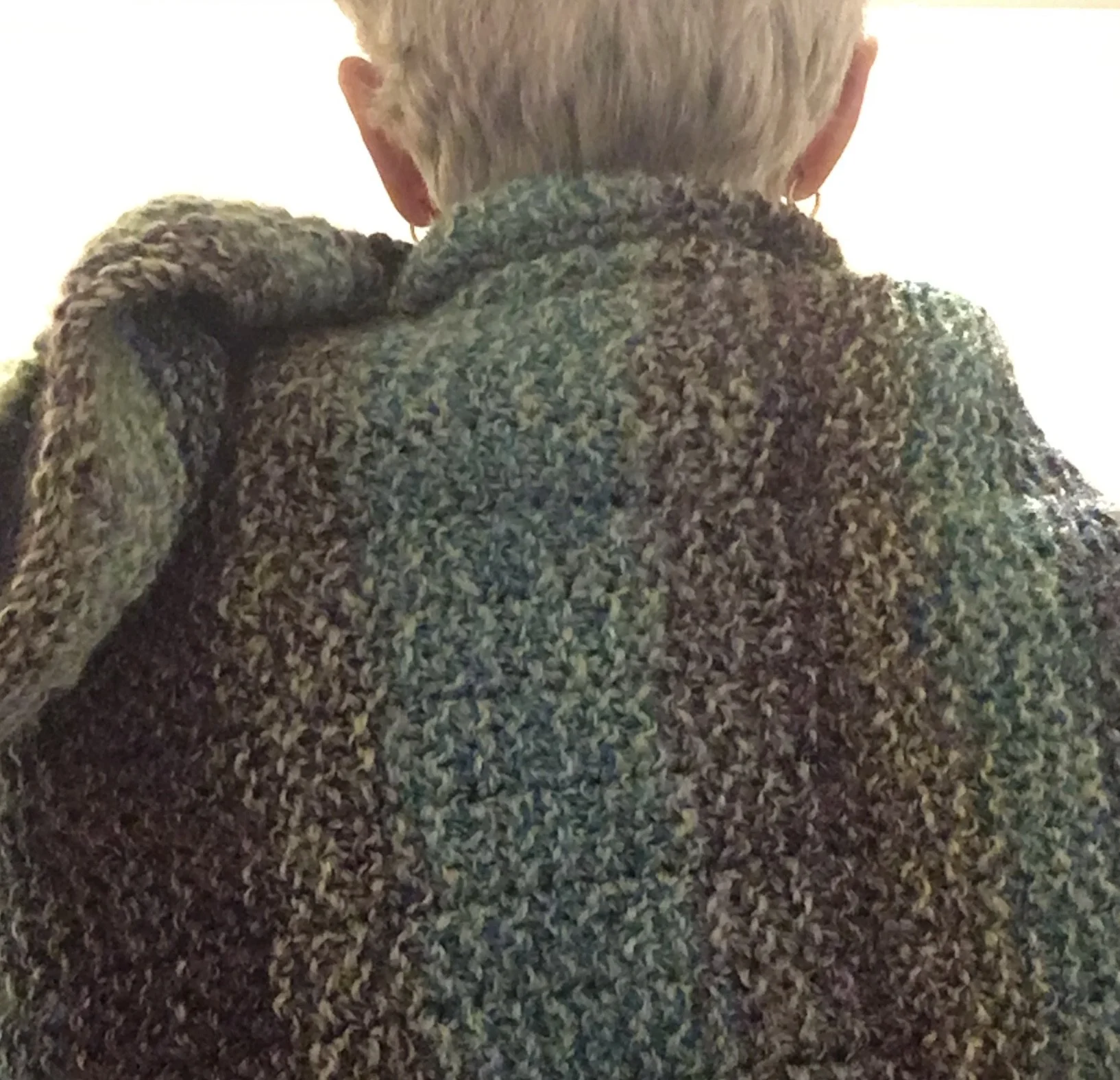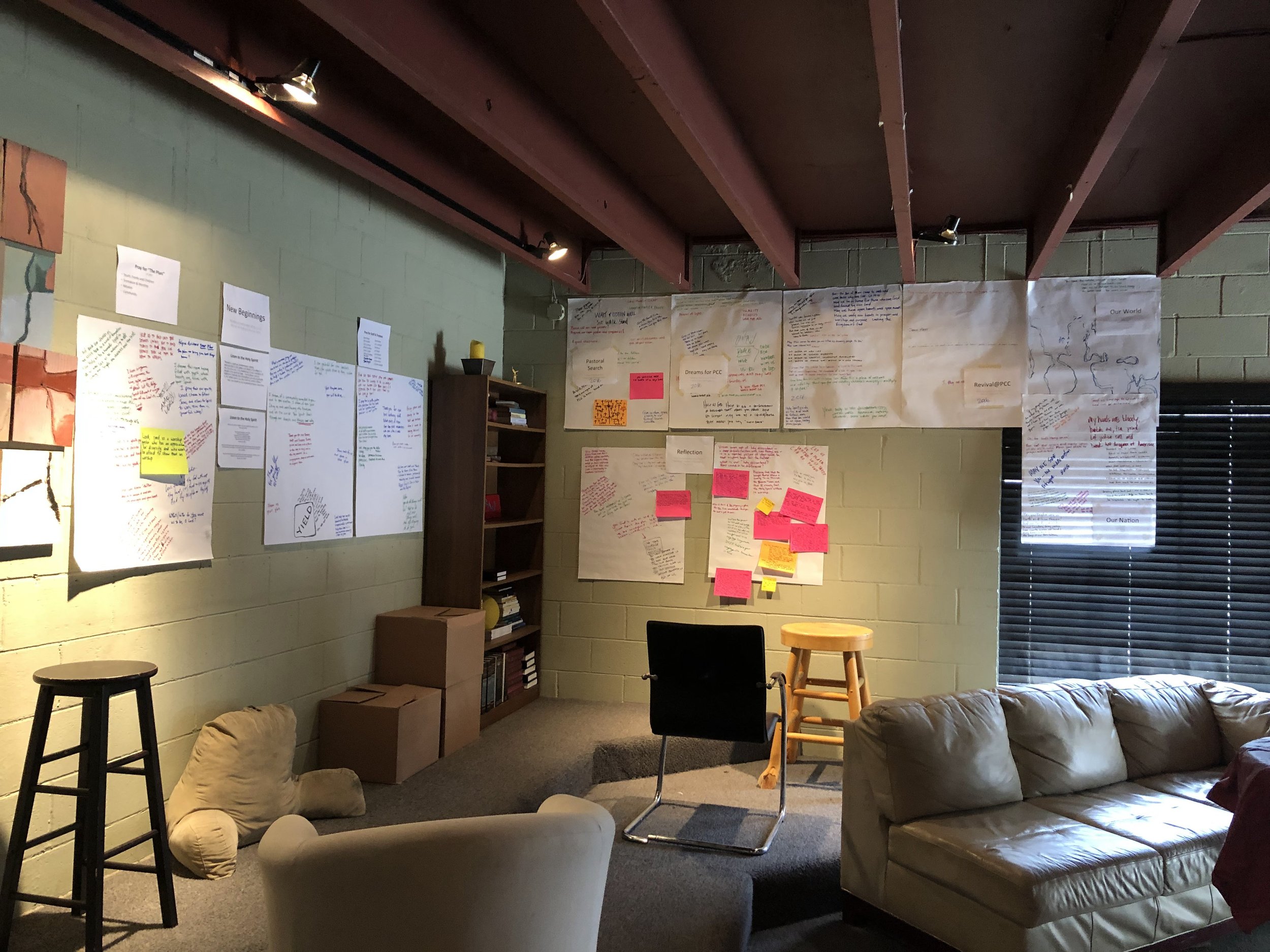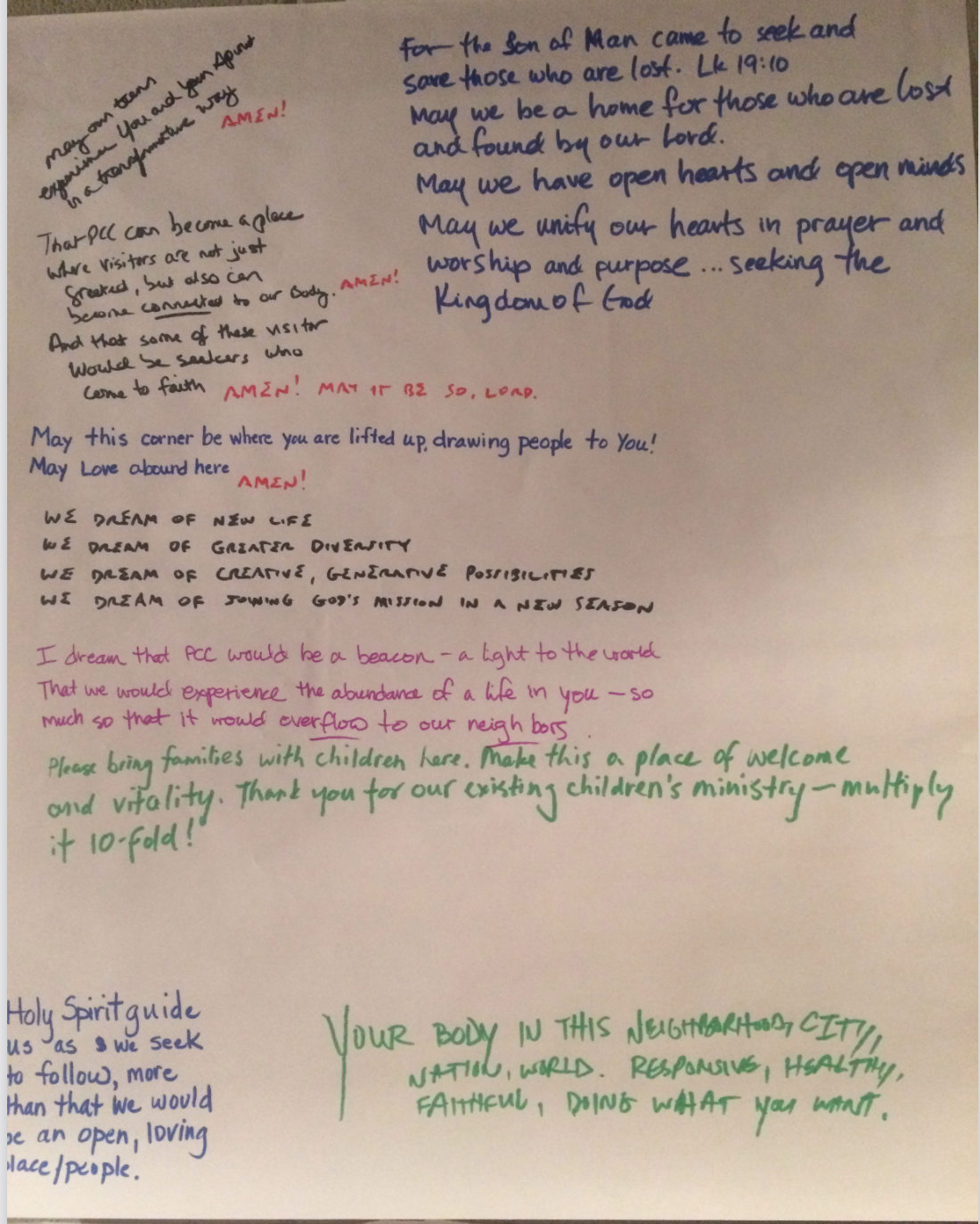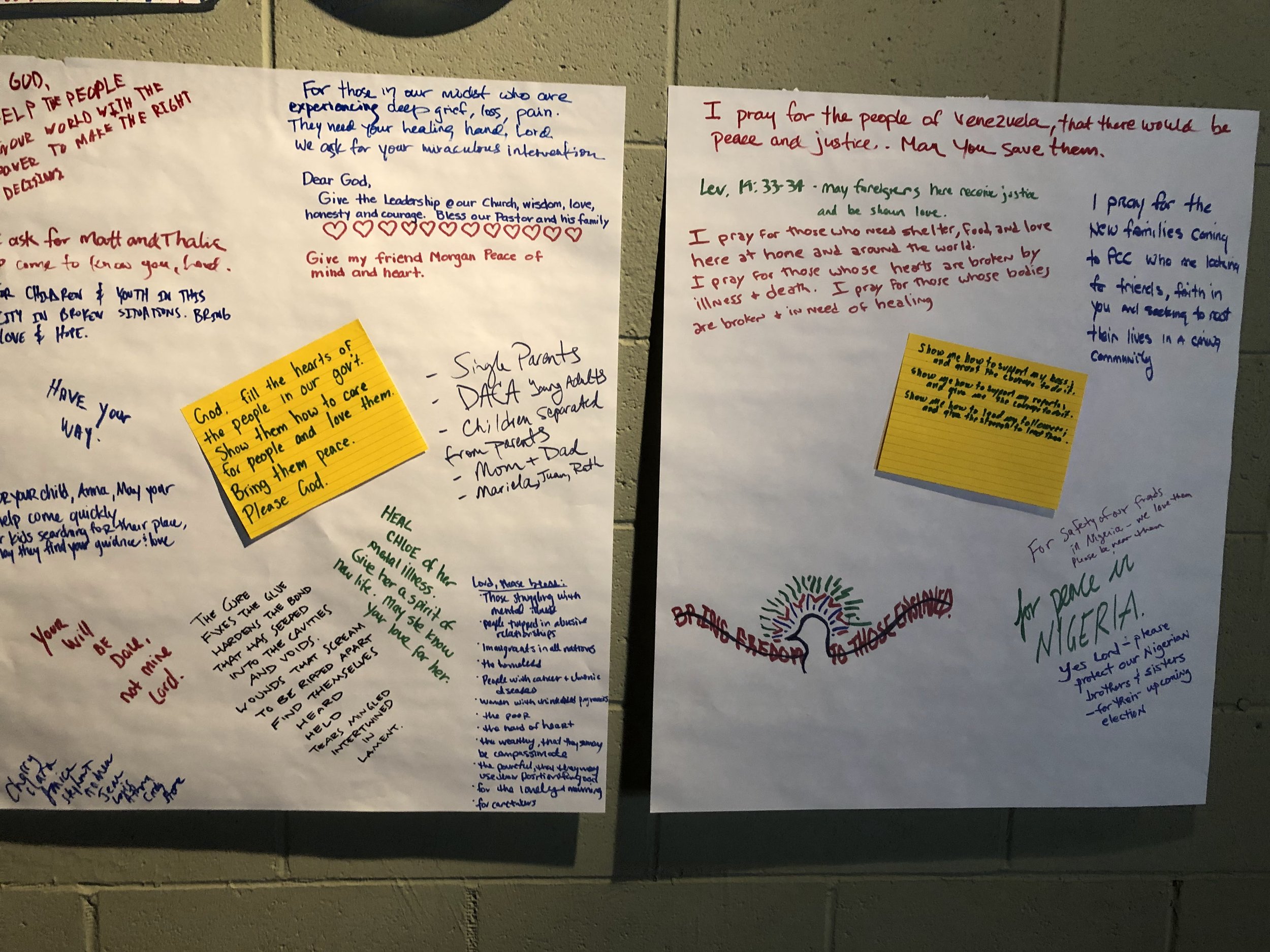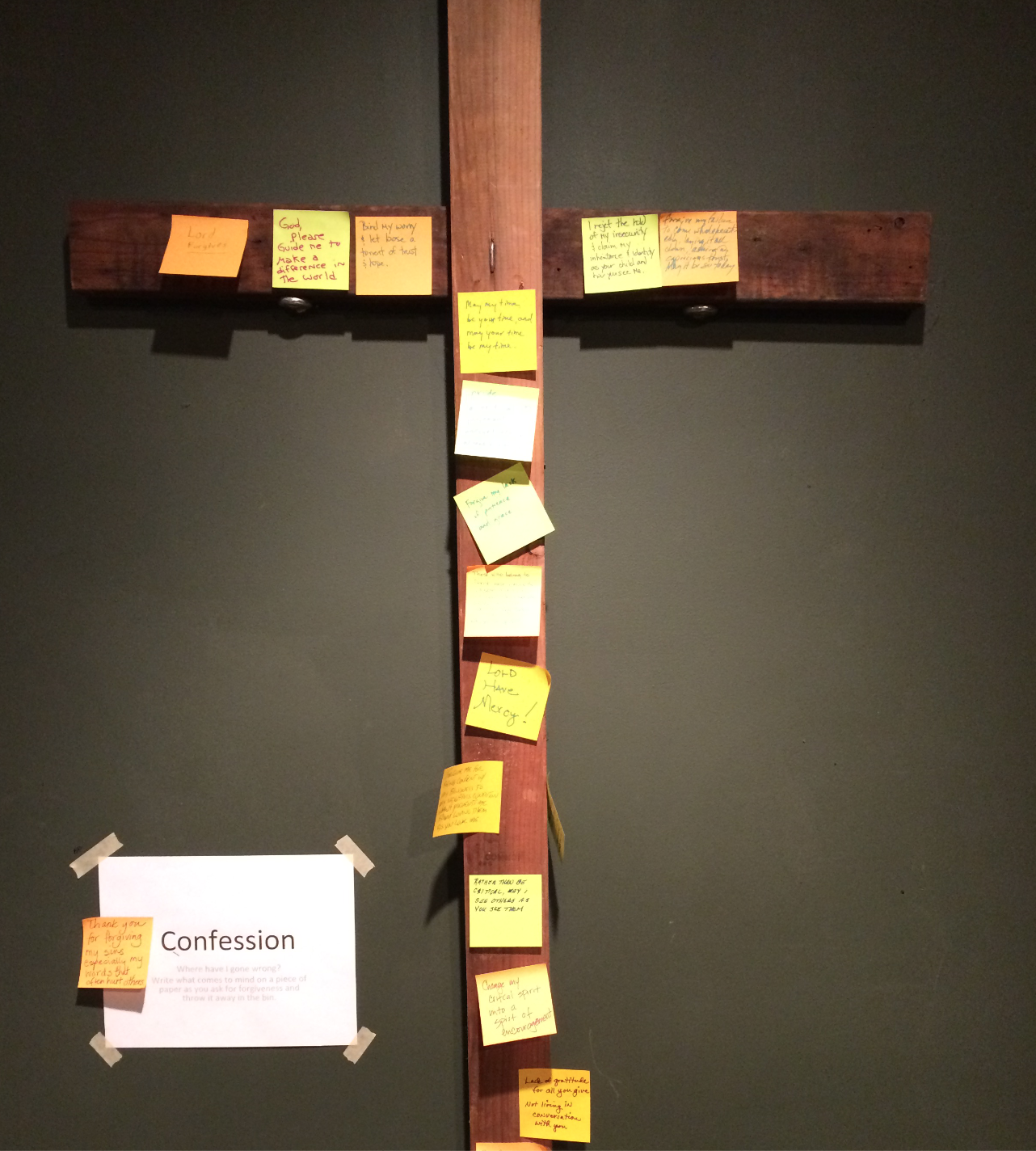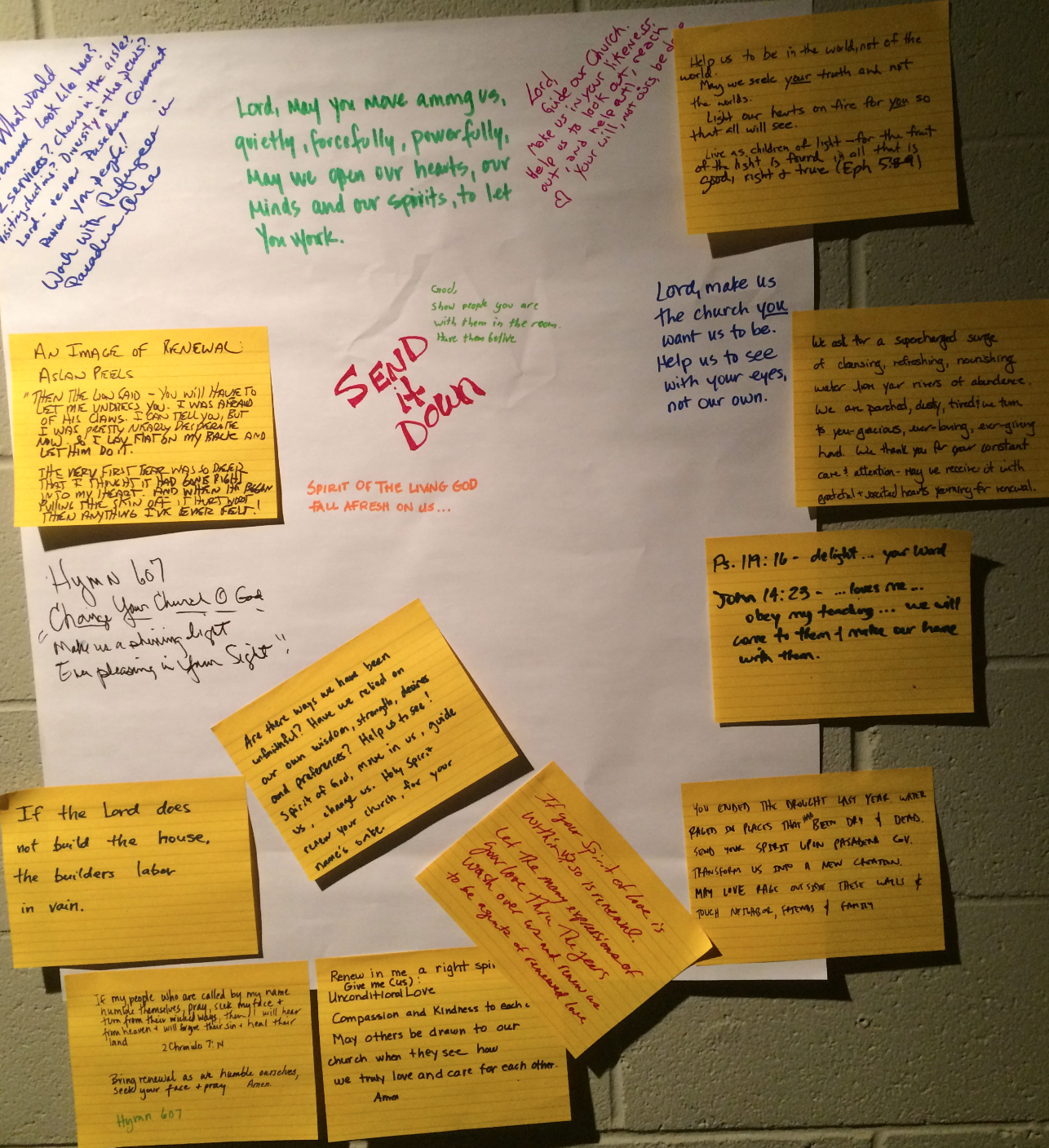Prayer
Introduction
The roots of prayer at Pasadena Covenant can be traced back to the 19th century Pietist movement in Sweden. Home-based small groups, or “conventicles,” that met for prayer, singing, Bible reading, and encouragement toward personal spiritual growth, were a practice that the founders of the church had grown up with and continued in their new church home.
One way prayer was a part of the church during the early days was a midweek prayer meeting. During one year when the annual report included attendance statistics (1959), attendance at the morning service was 450 and attendance at the prayer meeting was 75—one in six people were committed to that extra hour of group prayer. Traditionally, congregants got on their knees during this prayer time.
Another key season for prayer at the church started in 2002 when church leaders decided, as their vision statement put it, to “make prayer central.” Diane Woods led this Centrality of Prayer initiative until 2009. She oversaw multigenerational ministry teams who prayed before the worship service and who prayed twice weekly for the needs of the church. She visited the church council, committees, Sunday school classes, and house groups to demonstrate prayer activities. Prayer calendars for adults and kids were included in church newsletters. More initiatives from this time will be described below.
Details of the where, how, who, and when of prayer may have changed, but the why remains the same: we pray because Pasadena Covenant believes in a God who speaks and who listens, and believes that our relationship with God is nurtured through prayer. The differences are like different streams from the same river.
Where: places to pray
At some periods in the history of the church there have been special places to pray. The new church sanctuary built in the 1940s left a space in the old one, the room we now know as the Gathering Place. In 1954 it was dedicated as a prayer chapel—filled with people during the midweek prayer meetings.
The little room at the front of the church next to the women’s restroom was for a while used as a bride’s room. In 2009 the Tybergs redesigned it as a prayer room, which it served as through 2020. A table-top fountain, art, and a desk with Bibles for study and writing made it a quiet place for individuals or small groups to pray.
Anita Sorenson introduced the church to an off-campus location for prayer, Arlington Garden in Pasadena. In 2014-2015 she offered several Days Apart there for prayer and retreat.
How: learning various forms of prayer
The church has benefited over the years from seminars that both taught about prayer and created experiences of prayer. One seminar was in 1989, by Randy Roth, an active Pas Cov member while a Fuller student and later a Covenant pastor in Oakland, known for his commitment to praying for the city. Others were in 1990 and 1998 by Ron Lagerstrom, a Covenant leader who developed prayer resources for the denomination.
The most notable of these speakers was Brennan Manning, author of The Ragamuffin Gospel, who led us in a weekend retreat in March 2006. Attendees numbered 140 from the church and 150 more from elsewhere. Diane Woods, who organized the retreat as part of the Centrality of Prayer initiative, wrote in her annual report: “The retreat focused on Jesus’ extravagant boundless love for each of us. Manning encouraged participants to grow in intimacy with, trust of, and love for Abba because He is ‘so very fond’ of each of us.”
It wasn’t just outside speakers. Pastor Anita Sorenson led a one-day retreat on peace and prayer called “Come Away for a While” in 2003. She also led the Life Together class for adults on Sunday mornings from 1990 to 2010, which often focused on prayer. Starting with “Invitation to Prayer,” over the years her classes included "Praying through the Gospel of John," “Lectio Divina,” “Praying through the Hours,” and “Contemplative Prayer and Silence.”
Chuck Kraft, longtime Pas Cov member and Fuller Seminary professor, offered a four-month-long Sunday evening class on healing prayer around the year 2000. During his two-hour sessions, attendees learned about prayer for healing and then had a chance to experience both praying and being prayed for.
Who: intercessory prayer
The church has also had people who interceded for various specific ministries or groups. For example, in the 1950s and 1960s the Cradle Roll (more on this program in the February blog post on Families) was supported in prayer by Ollie Roth, who got up early every morning to pray for the mothers, children, and volunteers. Campus Club (more on this program in an upcoming blog post on Evangelism) was buoyed by the Bickers and Reimans who met weekly to pray for the ministry, as well as volunteers like Warren Thompson and Joni Bicker who visited high schoolers in their homes to pray about their life in Christ. In the 2000s, MOCS (Mothers of College Students) gathered to pray for children on the cusp of adulthood. The prayer group PATKIPS (Parents and Teachers of Kids in Public Schools) interceded for Pas Cov children and staff in local schools.
During group prayer meetings, individuals express their needs out loud, but there have been other ways people at Pas Cov can ask for prayer. During Pastor Charles Barker’s tenure, and led by Jim and Caryl Tyberg, the church began a program of Prayer Partners on Sunday mornings. Trusted people of prayer were available after the service. As Caryl said, “Like friends of the paralytic, we brought people and their requests to Jesus.”
There used to be a phone tree where someone could call one person, who in turn would call a few others, each of whom would call more people, until a whole group was interceding for the one in need. Technology has changed so that online requests, email, and texts are the ways intercession is prompted today. Christine Lusby has been keeping this prayer chain going since the mid-1990s.
Another ministry that started during the Centrality of Prayer period was “prayer shawls.”
More than 100 shawls were crocheted by people like Betty Tabell, Ann Mulholland-Wozniak, and Rachel Thaxton for people in the congregation and beyond going through hard times. The women prayed while making the shawls and wrote accompanying notes describing the prayer and the significance of the color or pattern. Sometimes even the delivery was special. Rachel describes one that entailed a drive to Las Vegas with Ruth Howell, our sign language interpreter at the time. The recipient was a young deaf woman, who had recently moved from Pasadena with her husband and had been diagnosed with a progressive terminal disease.
There have been countless individuals and groups who have prayed, and continue to pray, for each other. Perhaps you remember or are a part of such a group you could mention in the comments. How has this prayer support contributed to your life in Christ?
When: special times of prayer
In the 1950s and 1960s, the church followed the denominational practice of designating a week in January as “Prayer Week.” Themes ranged from “Drawing Nigh to God” to “Conversing with God” (per Rosalind Rinker’s influential book) to “Needs of the World.”
During a transition time for the church in 2008, Diane Woods led us in a two-month Lectio Divina on 2 Chron 7:12-16 and Eph 3:14-19 to discern next directions.
Facilitated by Randy Hill and Rob Filback, and inspired by the Alpha-related 24-7 prayer movement founded by Pete Greig, Pas Cov held a series of prayer vigils in 2015-2020. They started when the 2015 Alpha planning team prayed weekly for six weeks. The congregation was then invited to a 24-hour vigil in December 2015 and a 72-hour vigil in January 2016. A testament to the power of prayer, the Alpha course that spring was the largest ever run by Pas Cov. (More about Alpha in the upcoming blog post on Evangelism.)
In the vigils people signed up online for one or more hour-long slots, most spending their hour in the prayer room in what was then the youth building. Stations and suggestions for how to pray adoration, confession, and intercession were organized, along with specific concerns such as Our World, Our Nation, Pastoral Search, and Dreams for Pas Cov.
Poster boards, markers, and sticky notes let pray-ers document what was on their hearts or what the Holy Spirit was telling them. Two more vigils were held in April and August 2017, one in February 2019, and finally a series of four vigils in the summer of 2020. More than 60 households participated.
Summary
Influences on the prayer life of Pasadena Covenant have included the devotional practices of the 19th century Pietists, the charismatic renewal starting in the late 1960s and early 1970s leading to prayer for healing in the 1980s, the resurgence of ancient prayer practices such as Centering Prayer and Lectio Divina in the 1990s, and the 24/7 prayer movement in the 2000s—or simply our ongoing care for each other. We are grateful that the Holy Spirit has led us in countless ways toward experiencing the blessing and power of prayer.
Beyond 100
What prayer needs will be prominent in the next 100 years? What forms or practices of prayer will be important for our church in the future? How will God draw us to prayer?
We are so grateful to the many who have sought to follow God over the past century,
and now we seek to imitate their faith for the next hundred years.
Please join us in giving to this legacy of faithfulness!



